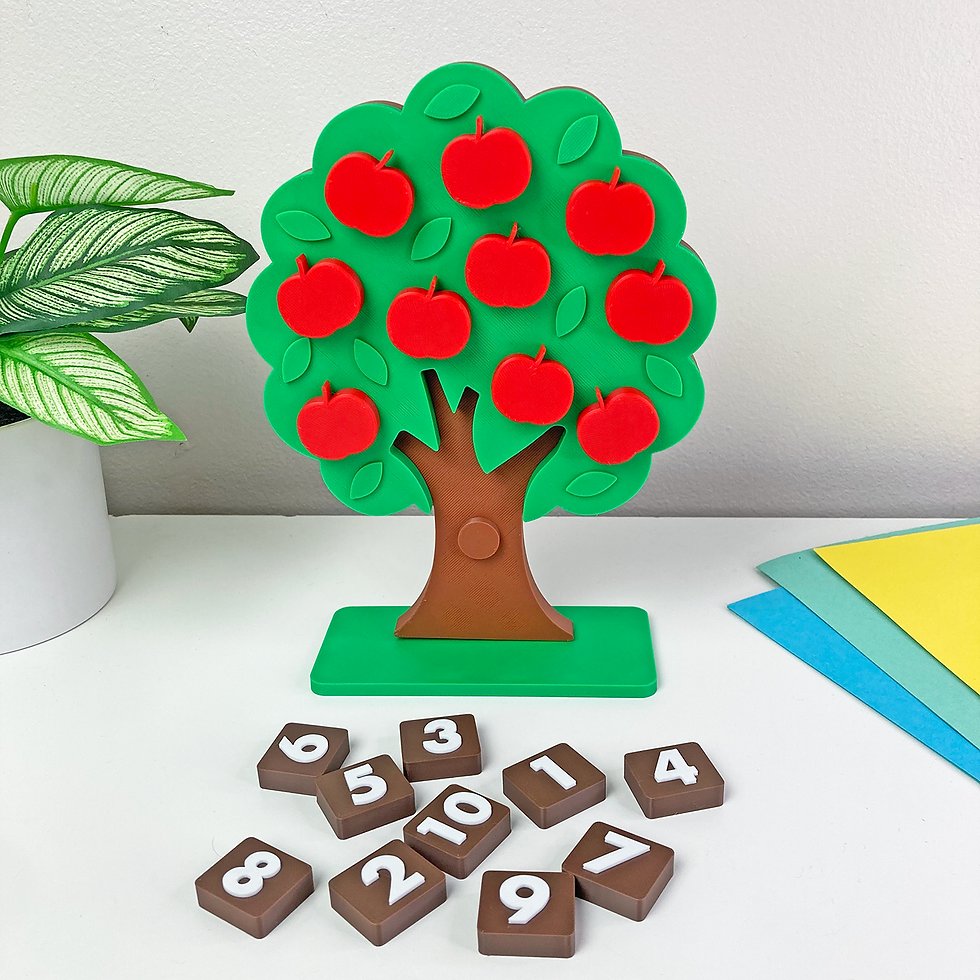🌟 Boost Learning with Play Dough Stencil Kits: Hands-On Fun with Science and Geography
- Fun House Toys

- Apr 9
- 4 min read
Updated: Jun 27
In a world filled with screens and passive learning, hands-on activities like play dough stencils are powerful tools that help kids connect with complex ideas in a fun and meaningful way. That’s why we created our Play Dough Stencil Kits, to make science, geography, and anatomy tangible, playful, and memorable.
From exploring the world map to assembling flower parts, these stencils help spark creativity, curiosity, and critical thinking in young learners. Whether you're a homeschool parent, classroom teacher, or just looking for screen-free educational play at home, these stencils are designed to engage kids through tactile, visual learning.
Let’s dive into the benefits of hands-on learning—and explore how each of our stencils supports developmental growth, science knowledge, and joyful exploration!

A Sustainable Learning Experience
Unlike our previous printable crafts, these stencil kits are a part of our new Science Craft Collection. It is made from sustainable, non-toxic PLA material. These kits are durable, perfect for homeschool, classroom settings, or weekend science fun at home.
✋ Why Hands-On Learning Matters
Hands-on learning isn’t just fun—it’s essential for early development. Here’s why:
Engages Multiple Senses: Kids learn best when they see, touch, and build—turning abstract concepts into real experiences.
Strengthens Fine Motor Skills: Rolling, shaping, and pressing play dough improves hand strength, grip, and coordination.
Promotes Deeper Understanding: Children remember what they create—making learning stick!
Encourages Independent Thinking: Kids explore at their own pace, ask questions, and make connections as they build.
ADVERTISMENT
We have a shortlist of favorite science crafts like Layers of Atmosphere, Inner Earth Layers, Anatomy of a Volcano, and Layer of the Ocean. This activity is sure to become a new favorite. It comes together fast and is packed with educational insight.
🔍 Featured Play Dough Stencil Kits
🧠 Brain Play Dough Stencil
Explore the amazing human brain, piece by piece! Kids press dough into each brain region—like the frontal lobe and cerebellum—while learning what each part does.
Fun Fact: Your brain uses about 20% of your body’s energy—even while you're sleeping!
Ask Your Kids:
“Which part of your brain helps you ride a bike?” (Answer: Cerebellum)
“What do you use your frontal lobe for?” (Thinking, problem-solving, memory!)
“Can you point to the part of your brain that helps you see?”

ADVERTISMENT
❤️ Heart Play Dough Stencil
A fun way to learn how our heart works! Kids mold dough into each part of the heart—like the ventricles and atria—and discover how blood flows through the body.
Fun Fact: The average heart beats about 100,000 times per day!
Ask Your Kids:
“Where does the blood go after it leaves the heart?”
“What part of the heart pumps blood to the lungs?”
“Why is the heart so important to your body?”

ADVERTISMENT
🌸 Flower Parts Play Dough Stencil
Make plant biology bloom with this floral stencil! Kids create petals, stamens, pistils, and more—learning how flowers reproduce.
Fun Fact: The stigma is sticky to catch pollen!
Ask Your Kids:
“Which part of the flower makes seeds?” (Answer: Ovary)
“Why do flowers have petals?” (To attract pollinators!)
“Can you name the male and female parts of the flower?”

🌍 World Map Play Dough Stencil
Geography becomes hands-on as kids mold continents and oceans using play dough. A perfect intro to continents, countries, and directions!
Fun Fact: Asia is the largest continent and home to more than half the world’s population.
Ask Your Kids:
“Can you find where we live on the map?”
“Which ocean is the largest?”
“Which continent is below Europe?” (Answer: Africa!)

🧍 Human Body Organs Play Dough Stencil
From the brain to the bladder, kids will explore the major organs of the body and their jobs. They’ll learn how systems work together while building!
Fun Fact: Your small intestine is about 22 feet long!
Ask Your Kids:
“Which organ helps you breathe?” (Answer: Lungs)
“Where does your food go after your stomach?” (Answer: Intestine)
“Can you name the organ that filters your blood?” (Answer: Kidneys)

ADVERTISMENT
💡 Tips for Parents and Teachers
Here are some ways to make your play dough stencil time even more meaningful:
🧠 1. Make It Interactive
Turn it into a science scavenger hunt—“Find the part of the flower that catches pollen!” or “Which part of brain remembers to eat?”
📚 2. Use Real-World Connections
Match your stencil activity to a real-world moment:
Talk about your last doctor visit while making organs
Watch a flower bloom in the garden
Look at a globe and find where you live
🎨 3. Add Creative Layers
Use different colors of dough for each part. Encourage kids to label parts using toothpicks.
🧩 4. Reinforce Learning Through Display
Once finished, let kids display their model on a shelf or science table. Keep the conversation going by revisiting each week!
🗣 5. Encourage Questions
Ask open-ended questions:
“Why do we need pollination?”
“What happens when we eat”
“How do we breath?”
ADVERTISMENT

🌟 Learning Made Fun and Memorable
Our Play Dough Stencils are more than crafts—they’re learning tools designed to spark imagination, exploration, and long-term understanding. Whether you’re teaching about human anatomy, space, plants, or geography, these models turn abstract concepts into something kids can hold, mold, and remember.
ADVERTISMENT
ADVERTISMENT
Try These Science Crafts
All of these crafts can be made with no prep to make your activity planning even easier!
Layers of Atmosphere - Layers of the Earth Space
Inner Earth Layers - Layers of the Earth Inner Core
Anatomy of a Volcano - Let's Make A Volcano that is Fun & Educational
Milky Way Spiral - Journey through our Galaxy
♻️ Built for the Planet and Built to Last
✨ Shop the Full Collection
Ready to bring hands-on science and geography into your home or classroom?
Let your kids squish, build, and learn—one doughy creation at a time!










